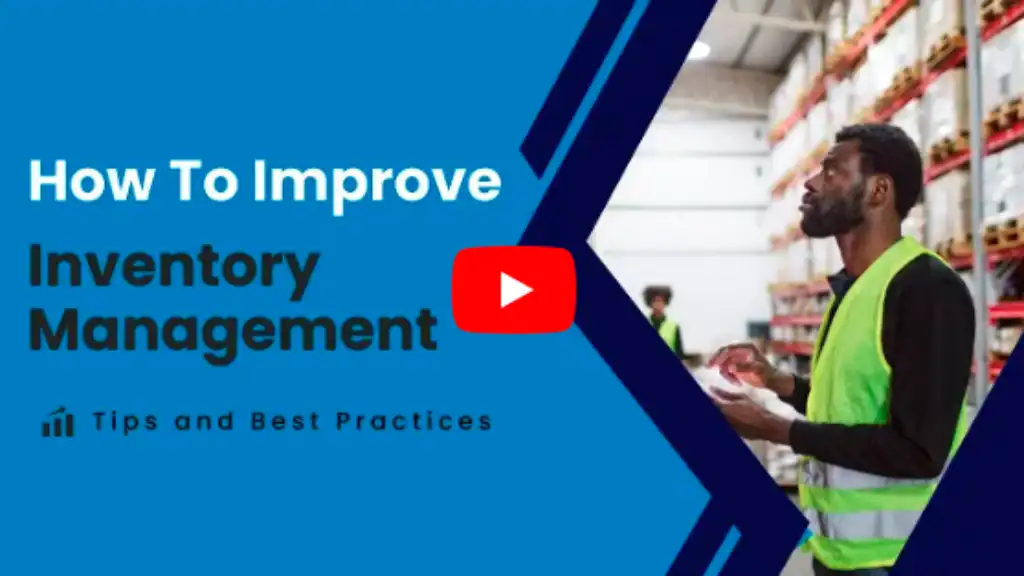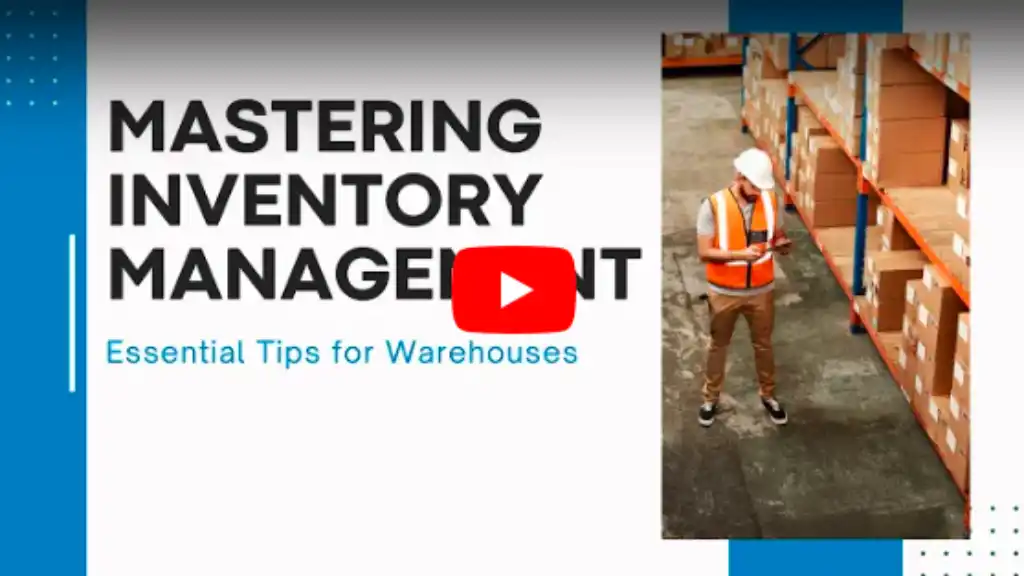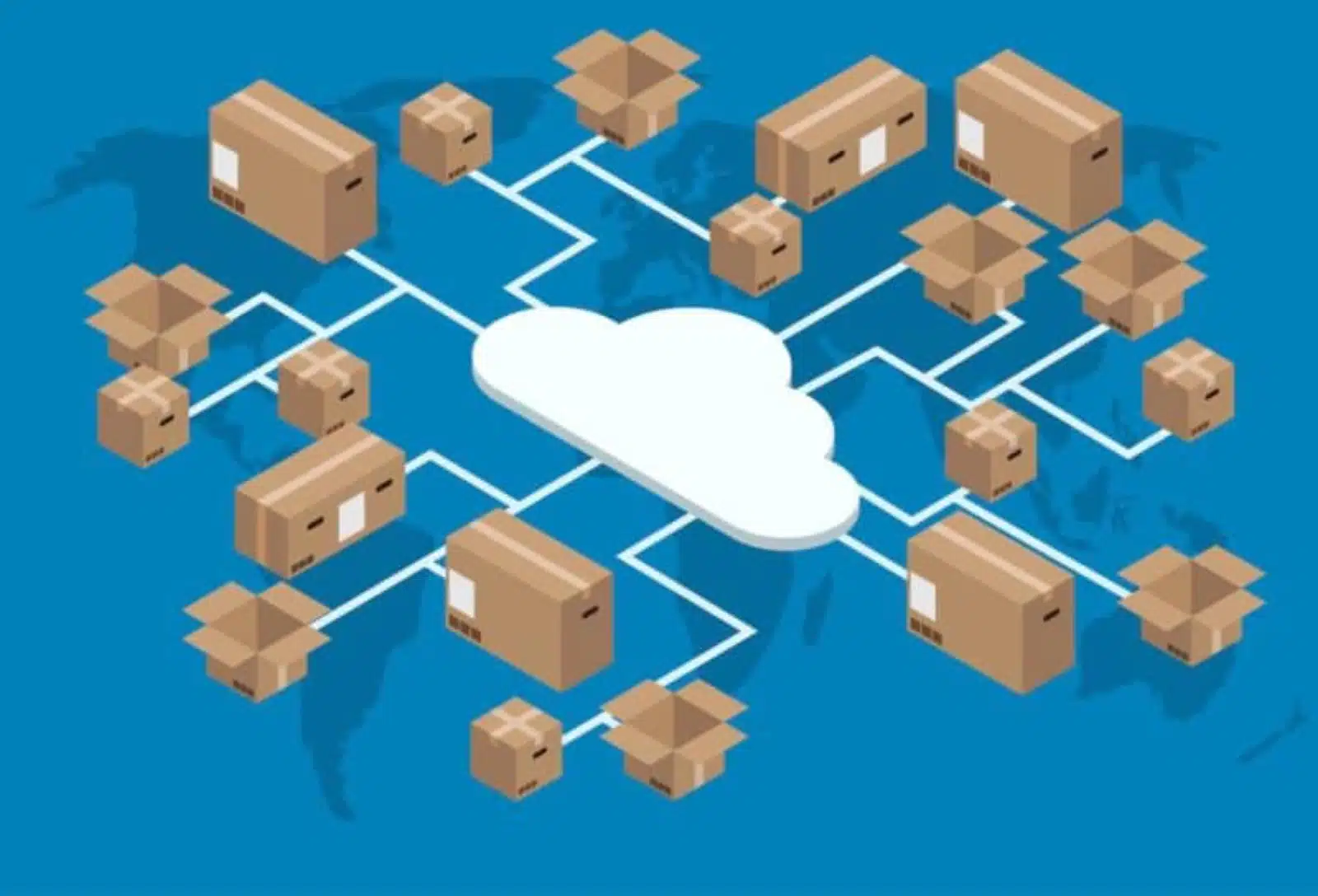
Managing inventory effectively is crucial for any business, whether you’re running a warehouse, an ecommerce business, or a small retail operation. Proper inventory management ensures that you can meet customer demand without holding excess inventory, thus improving your cash flow and overall efficiency.
In this guide, we’ll explore strategies, tools, and best practices for improving inventory management across various types of businesses.

What is Inventory Management and What Are its Benefits?
Inventory management is the process of organizing and tracking inventory levels, order fulfillment, and stock locations, typically in a warehouse. By streamlining these operations, businesses can improve their overall efficiency and better utilize their warehouse space. In turn, this can lead to cost savings and improved customer satisfaction.
Some of the specific benefits that can be gained from implementing a system to manage inventory include reduced labor costs, shorter lead times, and lower inventory levels.
Additionally, a well-run warehouse can provide a competitive advantage by allowing businesses to respond quickly to changes in customer demand. As such, inventory management is an essential part of any business that relies on maintaining an inventory of goods.
What is an Inventory Management System?
An inventory management system is a software application that helps businesses do the things mentioned above – track and manage their inventory levels, stock locations, and order fulfillment. These systems can also generate reports that provide insights into warehouse operations and help businesses improve their overall efficiency.
There are a variety of different systems for managing inventory on the market, each with its own unique features and pricing. Some software systems are focused strictly on managing inventory, while others are designed to manage the entire warehouse operation.

Inventory Management System (IMS) vs. Warehouse Management System (WMS)
An inventory management system (IMS) is a software application specifically built to help businesses track and manage their inventory levels. Whereas, a warehouse management system (WMS) is a software application that helps businesses track and manage a wide range of warehouse operations, including receiving, order fulfillment, reporting, and much more.
While inventory management systems can be helpful for managing inventory levels, warehouse management systems offer a more comprehensive solution for warehouse management. As such, a WMS is typically a better choice for businesses that rely heavily on their warehouse operations.
Logimax WMS offers all of the features and functionality of a warehouse management system, as well as a number of features specifically designed for managing inventory.

Best Practices for Improving Inventory Management
There are several best practices that every warehouse should follow in order to improve inventory management. Here are some of the most important:
1. Invest in Warehouse Management Software
Warehouse management software, like Logimax WMS, can automate many of the tasks involved in inventory management, from tracking stock levels to placing orders. This software can also generate reports that will help you optimize your inventory levels and improve your overall warehouse efficiency.
2. Keep Track of Your Stock Levels
After implementing a warehouse management system, the next step to effective inventory management is knowing what you have in stock and where it’s located.
One option is to use an inventory management software like Logimax WMS. Our software can help you track your stock levels in real-time, so you always know what you have on hand. For best results, use our system together with barcodes and RFID tags to keep track of your inventory.
3. Use FIFO Inventory Management
When it comes to managing your warehouse inventory, it’s essential to use a system that will help you keep track of your stock levels and ensure that you’re using your space efficiently. The FIFO (first in, first out) method is one of the most popular and effective inventory management systems.
With the FIFO system, you’ll always ship or sell the oldest items in your inventory first. This ensures that your products are always fresh and reduces the risk of them expiring before they’re sold.
4. Conduct Regular Inventory Counts
It’s important to conduct regular inventory counts to ensure that your stock levels are accurate. This can be a time-consuming task, but it’s essential to maintaining effective control over your inventory.
Inventory counts can be conducted manually or with the help of an inventory management software like Logimax WMS. If you choose to conduct manual inventory counts, be sure to schedule them at regular intervals and plan for them in advance.
Additionally, cycle counting is a method of inventory management that involves counting a subset of your inventory regularly, instead of counting everything at once. This can help to reduce the time and effort required to conduct a full inventory count.
5. Set Clear Processes and Procedures
In order to effectively manage your inventory, it’s important to have well-defined processes and procedures in place. These should be designed to help you track your inventory levels, keep your stock organized, and minimize the risk of errors.
Some of the key processes and procedures that you should put in place include:
- Creating a system for receiving and storing new inventory.
- Tracking inventory levels and reordering stock when necessary.
- Organizing your inventory so that it’s easy to find items when needed.
- Conducting regular inventory counts.
6. Regularly Review Your Inventory
It’s important to regularly review inventory management systems to ensure they are optimized. This will help you to identify any areas where improvements can be made.
Doing a review also allows you to adapt to changes in your business, such as an increase in the number of products you’re stocking or a change in your storage capacity.
7. Invest in Ongoing Training for Your Staff
In order to effectively manage your inventory, it’s important that your staff are properly trained. They should understand how your inventory system works and be familiar with the procedures that need to be followed.
Investing in ongoing training will help to ensure that they’re able to carry out their tasks efficiently and effectively. It will also help to reduce the risk of errors being made.
8. Implement Safety Measures
It’s important to implement safety measures to prevent accidents as well as to protect your inventory from damage or theft. Some of the safety measures that you should put in place include:
- Using proper lifting techniques to avoid injuries.
- Storing hazardous materials safely.
- Securing your inventory with locks and alarms.
- Making sure that only authorized personnel have access to your inventory.
- Installing security cameras, alarms, locks, gates.
9. Use Quality Control Methods
Using quality control methods can help to ensure that your inventory is in good condition and fit for sale. This can include inspecting items when they’re received, conducting regular inventory counts, and using barcodes and RFID tags to track your inventory.

Tips for Improving Warehouse Inventory Efficiency
There are a number of ways to improve inventory efficiency in a warehouse setting, including:
- Streamline Receiving: This can be done by implementing a system wherein all incoming shipments are logged and tracked. This will allow warehouse staff to quickly and easily locate any specific item that may be needed.
- Improve Organization: This means creating a system that logically arranges items in the warehouse so that they can be easily found when needed. This can be done through the use of shelves, bins, and labels. By taking the time to organize the warehouse properly, staff will be able to save time when looking for specific items.
- Keep an Accurate Inventory: This can be done through the use of barcodes or RFID tags. Using these tags, you can track items as they move through the warehouse, and they can also be used to locate items that may have been misplaced. By taking the time to implement these tracking methods, warehouses can ensure that their inventory is always accurate and up-to-date.
Tips for Organizing Your Warehouse Space
Proper warehouse inventory management requires careful consideration of how your warehouse space is being used. There are a number of ways to optimize your warehouse space, including:
- Utilize vertical space as much as possible. This can be done by installing shelving units and racks that extend to the ceiling.
- Group similar items together in one area to make it easier to find what you need.
- Label all shelves and bins clearly so that everyone knows where things are supposed to go.
Tips for Handling Seasonal Changes and Unexpected Increases in Demand
As a supply chain business or manufacturer, you are responsible for ensuring that products are delivered on time and in good condition. This can be a challenge at the best of times, but it can be especially difficult during seasonal changes or periods of unexpectedly high demand.
Here are some tips to help you navigate these challenges:
- Communicate early and often with your clients. They will need to be aware of any potential delays so that they can make alternate arrangements if necessary.
- Have a contingency plan in place for when things go wrong. This might include partnering with another 3PL who can pick up the slack if you are unable to meet demand.
- Be flexible and adaptable. Things rarely go according to plan, so being able to adjust on the fly is essential.
By following these tips, you will be better prepared to handle whatever challenges come your way.
Tips on How to Deal with Damaged or Defective Products
As any supply chain manager knows, damage and defects are an inevitable part of doing business. Whether it’s a carton that’s been crushed in transit or a product that didn’t meet quality standards, dealing with damaged goods is just part of the job.
Here are some tips on how warehouses can best deal with damaged or defective products:
1. Invest in Quality Control
One of the best ways to deal with damaged goods is to prevent them from happening in the first place. That’s why it’s important to invest in quality control measures. By conducting regular inspections and audits, businesses can identify potential areas of improvement and take steps to prevent damage from happening.
2. Have a Clear Returns Policy
When customers receive damaged goods, they usually want to return them for a refund or exchange. That’s why it’s important to have a clear returns policy in place. This policy should outline how customers can return damaged goods and what they can expect in terms of refunds or replacements.
3. Keep Good Records
When damage does occur, it’s important to document it thoroughly. This documentation will be used to file insurance claims and help businesses track trends over time.
How to Choose the Right Inventory Management Software
There are a few key factors to consider when choosing a warehouse inventory management software. First, you’ll need to decide what type of system you need.
On-Premise vs. Cloud-Based Systems
There are two main types of management systems for warehouse inventory: on-premise and cloud-based. On-premise systems are installed on your company’s servers, while cloud-based systems are hosted by a third-party provider.
Features and Functionality
Next, consider the features and functionality that you need. Some inventory systems offer basic features like inventory tracking and order fulfillment, while WMS systems offer a more comprehensive suite of tools, including warehouse optimization.
Pricing
You’ll also need to consider the price of the system. Inventory and warehouse management systems typically start in the tens of thousands of dollars and can be priced upwards of a couple hundred thousand dollars. However, many system providers now charge on a subscription basis. For a much smaller fee, you get full access to the system as well as technical support to ensure that the system is always up and running.
Logimax WMS is a cloud-based warehouse management system that offers all of the features and functionality you need to streamline your inventory management process. Logimax WMS is priced on a yearly subscription basis, so you can get started without having to make a large upfront investment.
Standalone vs. Add-On System
Finally, you’ll need to decide whether you want to purchase a standalone system or integrate your warehouse inventory system with your existing enterprise resource planning (ERP) system. If you have an ERP system in place, it might make sense to integrate your inventory system with it. This would allow you to share data between the two systems and improve efficiency. However, if you don’t have an ERP system, you can still purchase a standalone WMS or inventory system.
Logimax WMS: Inventory Management for 3PLs, Distribution Companies, and More
Logimax is a comprehensive WMS built for 3PLs and distribution companies, but can also handle complex industries such as consumer packaged goods, pharmaceuticals, cold storage, and more. Our system is browser-based and lives in the cloud , so it can be accessed from anywhere, at any time. Logimax WMS also integrates with existing ERP systems or other complementary software solutions such as EDI, TMS, etc.
Some of the key features and benefits of Logimax WMS include:
- Comprehensive inventory management including real-time tracking of stock levels, locations, and movements
- Flexible order management including support for multiple order types, custom workflows, and user-defined rules
- Powerful reporting and data analytics tools to help you optimize your warehouse operations
- Support for multiple warehouses and stock locations
- Integration with popular ERP systems such as SAP, Oracle, or Microsoft Dynamics
- Scalable and modular design so that you can add new features and functionality as your business grows
If you are looking for a comprehensive, cloud-based system that offers all of the features and functionality you need to streamline your inventory management process, Logimax WMS is the perfect solution for you.
Conclusion
By following these tips, supply chain businesses can ensure that their inventory is well-organized and prepared to handle any challenges that come their way. Implementing these tips will help warehouses and other businesses run smoothly and efficiently, which will ultimately lead to happier customers and higher profits.
Logimax WMS is a comprehensive warehouse management system that can help you streamline your inventory operations and improve your bottom line. For more information on how Logimax WMS can benefit your business, contact us today.



